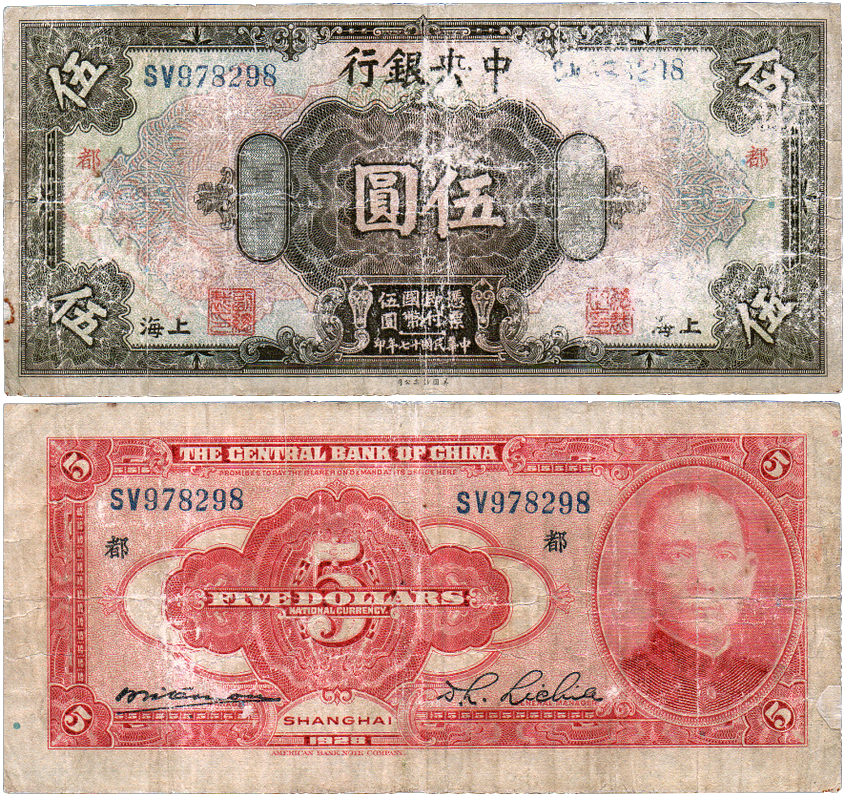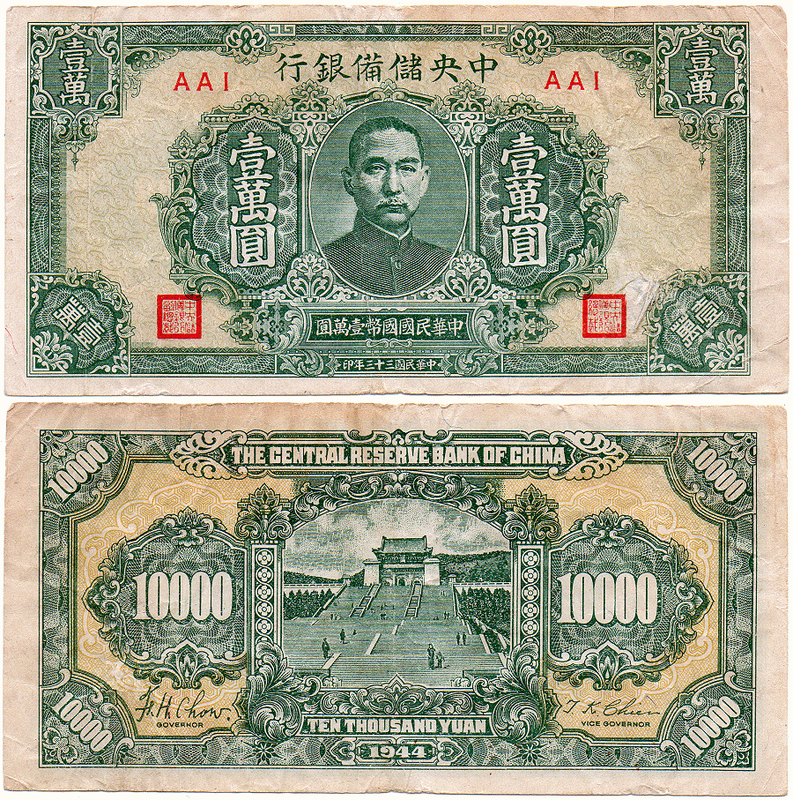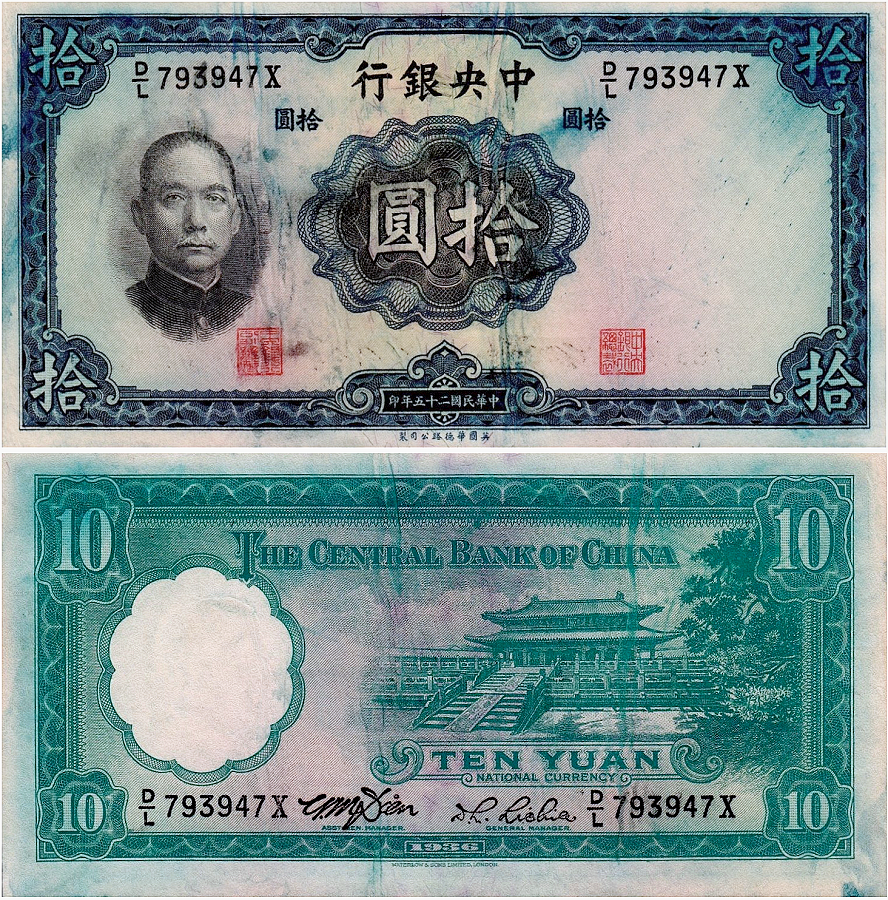Cleaning Paper Money? |
Updated 04 January 2018
|
The most sensible advice usually?
Don't!
At best; some gentle pressing can be attempted without using heat, perhaps by leaving inside a heavy book. Gently unfold bent corners carefully using tweezers, though avoid this if there is any likelihood of the corner breaking off. Gently use a non abrasive eraser to attempt to remove marks (however; see under - Never - below), being carefully not to wear the surface of the paper. If it doesn't come off easily: leave it.
Never attempt to remove writing (aka annotations, graffiti) unless it has been added long after the note has ceased to circulate, and only then if written using pencil. Usually this sort of graffiti is of catalogue numbers penciled in the margins by dealers or collectors. Likewise, never attempt to remove overprints, chop-marks (common on Chinese paper-money) and similar features which are an integral part of the item's circulating history, and any attempted removal will in any case severely damage the note.
Never soak or wash paper-money or use chemicals to clean. This can easily damage the surface of the paper, reduce the body of the paper, weaken folds, and damage the printing: It can cause wear to the printing, discolour, blur or remove printed areas, can discolour the paper and remove serial numbers and seals. For examples of the consequences, please see below.
Lastly, cleaning a note will in most cases devalue it - often drastically (in particular see the Central Bank 5 Dollars of 1928, P 196b, below). And be warned that I've sometimes encountered poorly cleaned notes being passed off as printing errors!
The Gallery of Shame: examples of the horrors of cleaned paper-money
Don't!
At best; some gentle pressing can be attempted without using heat, perhaps by leaving inside a heavy book. Gently unfold bent corners carefully using tweezers, though avoid this if there is any likelihood of the corner breaking off. Gently use a non abrasive eraser to attempt to remove marks (however; see under - Never - below), being carefully not to wear the surface of the paper. If it doesn't come off easily: leave it.
Never attempt to remove writing (aka annotations, graffiti) unless it has been added long after the note has ceased to circulate, and only then if written using pencil. Usually this sort of graffiti is of catalogue numbers penciled in the margins by dealers or collectors. Likewise, never attempt to remove overprints, chop-marks (common on Chinese paper-money) and similar features which are an integral part of the item's circulating history, and any attempted removal will in any case severely damage the note.
Never soak or wash paper-money or use chemicals to clean. This can easily damage the surface of the paper, reduce the body of the paper, weaken folds, and damage the printing: It can cause wear to the printing, discolour, blur or remove printed areas, can discolour the paper and remove serial numbers and seals. For examples of the consequences, please see below.
Lastly, cleaning a note will in most cases devalue it - often drastically (in particular see the Central Bank 5 Dollars of 1928, P 196b, below). And be warned that I've sometimes encountered poorly cleaned notes being passed off as printing errors!
The Gallery of Shame: examples of the horrors of cleaned paper-money
|
The Central Bank of China 50 Cents of 1936, Krause P 205
A heavily circulated note which thanks to harsh cleaning has lost any remaining body to the paper. The printing has a faded look, appearing pale and discoloured. The Central Bank of Manchukuo 100 Yuan, 1941-45 Krause P J138a
Here there appears to have been a ill advised attempt to tidy up the edges by cutting off frayed areas, leaving an uneven edge line. Furthermore, washing has caused ink either from the back design, or from the serial numbers, to bleed, staining most of the front of the note with a pink-red tinge. |
The Central Bank of China 5 Yuan of 1936, Krause P217c
A circulated note which has lost much of it's body due to cleaning. However the most noticeable consequence is that it has almost lost the red seals which appear on the front. Cleaning has reduced these to a pale orange ghost. The National Bank of Vietnam (North Vietnam) 100 Dong of 1951, Krause P 62b
Washing has almost obliterated the pair of red circular seals which should appear at the lower front of the note, and are now barely perceptible. The ink from the seals has stained the paper extensively. |
|
The Central Bank of China 5 Dollars of 1928, Krause P 196b
The worst of the examples. The front of this scarce banknote has been almost destroyed by soaking and abrasive cleaning; the paper's surface has been rubbed away and bleached white almost obliterating the right hand serial number, much of the design and ruining a large red merchants chop mark at the left. (Whoever is responsible for this should have been shot!) Left in it's original condition, this banknote would have sold for at least 20-50 times the nearly nothing I paid for it. |
The Central Reserve Bank of China 10,000 Yuan of 1944 (1945). Krause P J38a
Poor cleaning has left an uneven staining by the dirt. More unfortunately, the surface of the paper has wrinkled through rubbing, coming off altogether at the area to the top right of the right hand red square seal of the front. Clearly, the culprit noticed the damage before completely destroying the front of the note, unlike that of the Central Bank 5 Dollars (left). |
|
Right: The Central Bank of China 10 Yuan of 1936, Krause P218e This example shows a banknote severely damaged by water (and possibly other substances). It is unclear whether this is the result of attempted cleaning (though I strongly suspect it is, due to the smudging), or some other instance of water damage. Funnily enough, in this case the seals have survived well; it's the border and back colours which have ran severely, ruining this note and probably many others, if cleaned 'en-mass'. |
|
The latest addition (03 January 2018) to the 'gallery of shame'
Right: Farmers Bank of Northwest China - 西北農民銀行, 10,000 Yuan of 1948. A rare and heavily circulated banknote, which would have been better left in it's original condition. Now it is limp, lifeless and artificially bright in areas, with detail missing due to the cleaning. I won it for £3 ($5 USD). Left alone it would have sold for much more. |








